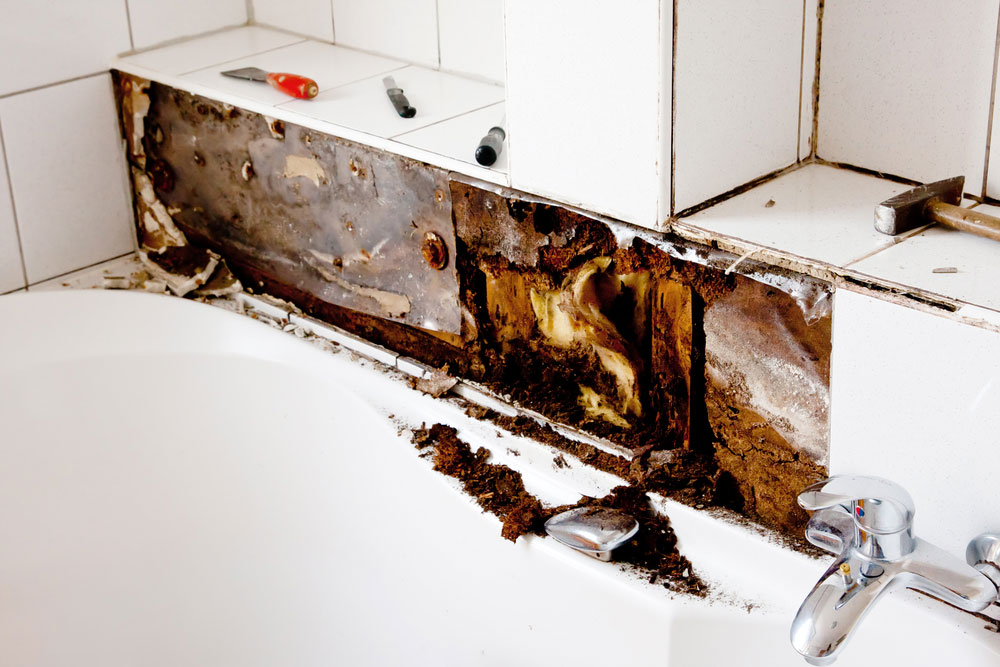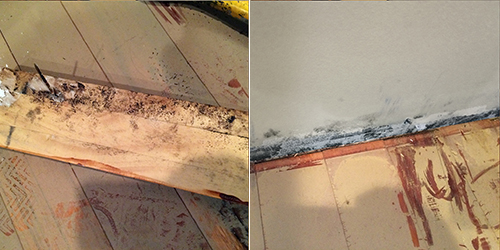Here below you can discover lots of superb information and facts regarding How to Fix a Water Damage Bathroom.

The bathroom is extremely prone for damp build-up and possible water damages because of the regular use of water in it. This write-up supplies basic evaluation strategies to aid finding water damage hazards.
The constant use water in the restroom makes it extremely at risk for damp accumulation and also possible water damage. By inspecting it consistently, you can decrease water related problems.
The complying with set of examinations is simple to perform and also ought to be done once in every 3 months in order to keep your bathroom healthy and to stop prospective water damages triggered by the bathtub, the shower, pipeline joints as well as plumbing, sinks, closets, as well as the toilet
Do not disregard carrying out these examinations as well as be thorough while doing them. Keep in mind that these basic evaluations can conserve you a lot of money by giving early indications for water damages
Sinks and Cabinets
Sinks and also cupboards are exposed to wetness and moisture daily and also are typically forgotten. Check regularly under the sink as well as on the countertop over it. Repair any kind of drip in the catch as it might recommend drainpipe issues. Look around the sink, sluggish draining pipes might indicate a blocked drainpipe. Replace sink seals if they are fractured or loose.
Bath tub and Shower
The shower and also bathtub need special interest and also maintenance. Examine the tiles as well as change if cracked. Ensure that there is no missing out on grout between the ceramic tiles. Evaluate and replace split caulking at joints where the wall surfaces meet the floor or the tub. Obstructed drains as well as pipelines troubles will certainly avoid the tub from drying out and also may indicate severe troubles under the bathtub. Speak with an expert quickly to prevent structural damage. Focus on stainings or soft locations around the bath tub walls as they may indicate an interior leakage.
Plumbing
Signs for water damages are tough to identify since many pipes are set up inside the wall surfaces.
Pay unique focus to floor covering and also wall surfaces dampness and stains as they may indicate an unnoticeable plumbing problem. Check moisture levels in adjoining rooms as well.
The Toilet
The toilet is a susceptible water junction. Inspect the water lines as well as search for leaks around the toilet seat, in the hose pipe, and under the water tank. If you spot any signs of moisture on the floor around the toilet, look for leakages in the toilet edge as well as storage tank seals.
Know that hanging bathroom bowl deodorants increases the chances for clogs.
Water Damage Signs In The Bathroom To Avoid Cleanup
Musty smell
This is one of the easiest signs to catch because musty smells are so odorous. The damp, earthy, moldy smell should be a big red flag. The smell will develop when moisture gets trapped in surfaces, and begins to facilitate mold growth. Leaking pipes under cabinets, inside walls, and behind shower fixtures will cause moisture to stay trapped and not dry, which will lead to mold growth and spread. As soon as you notice any musty smells in your bathroom, have it checked for hidden water damage and cleanup signs.
Visible mold
If the smell isn’t there to give it away, sometimes you will actually see mold growth. Finding mold in your bathroom is a serious problem, because mold is very harmful to your health. By the time mold growth is visible, it also means that water damage has already occurred and been present for some time. The only way the mold problem can be resolved is to find the source of the moisture and get it stopped. To safely and adequately remove mold, you need to have professionals handle the remediation. Do not waste any time in getting mold problems addressed, fixed, and sanitized so that you can protect you and your family from the many respiratory symptoms caused by mold exposure.
Damaged floors
Bathroom floors should be able to withstand some exposure to water while still remaining in good condition. However, when excess exposure or water leaks occur, they will begin to damage even the most water-resistant flooring. If you notice any cracking, bubbling, staining, or warping on your bathroom floors, there is probably a water leak somewhere causing the distortion. If you notice areas of the floor have become softer, or even have a spongy feeling, there is probably damage to the subfloor. Subflooring is typically made up of plywood. When plywood is exposed to water or moisture, it will absorb it. Once it has become saturated, the weight of the excess water will cause the wood to swell and soften. Check the floors in your bathroom frequently to catch any of these sings before they lead to damaged subflooring.
Changes on walls
When water leaks behind walls, it will cause changes in the drywall. Peeling plaster, blistering paint, and soggy wallpaper are all good indicators that excess water is building up behind the wall. Water leaking behind drywall will cause it to swell and be soft to the tough. If you start to notice gaps along the trim of your walls, or where tile meets the wall, it could also be a strong indicator that there is a leak behind the wall. Any changes, distortion, or damage on the walls should be evaluated as soon as you notice it to prevent further water damage and cleanup.

As a serious reader about How to Prevent Bathroom Water Damage, I thought sharing that excerpt was smart. Are you aware of somebody else who is involved in the topic? Take a moment to share it. Kudos for your time. Kindly check our site back soon.
Call Us Now